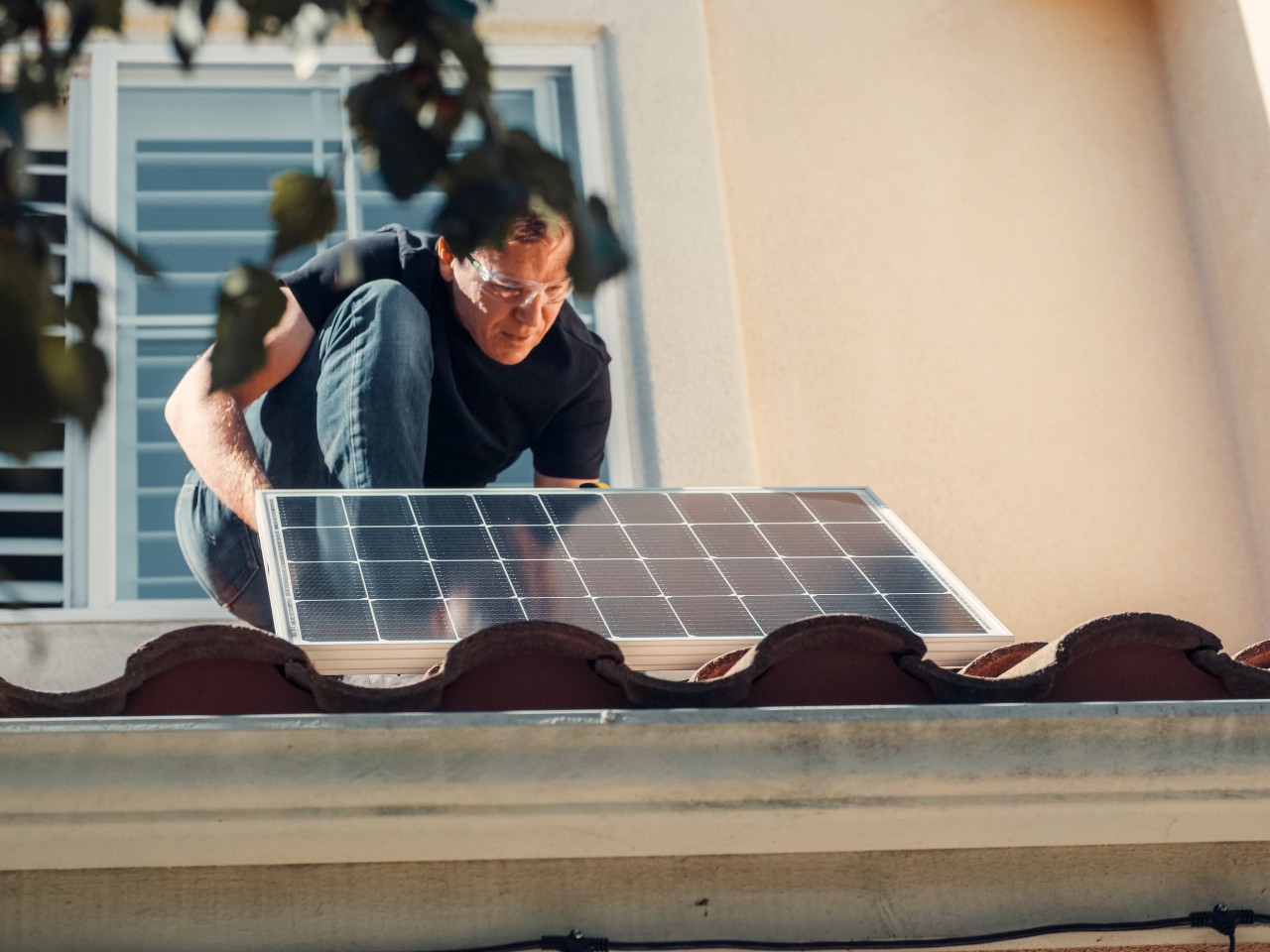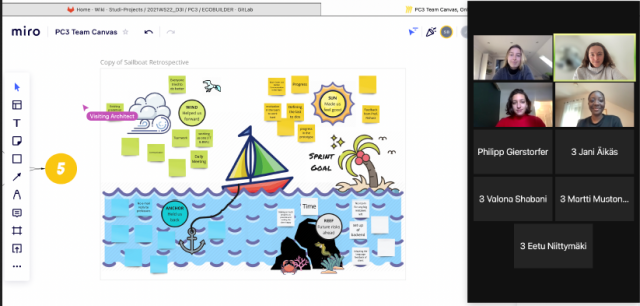Cost-efficient ways to build energy-efficient with Ecobuilder

Overview
The Co-Innovation Lab at the Munich University of Applied Sciences enabled an interdisciplinary team of students from Munich and Tampere to work together on a project for the Bavarian Environment Agency. As part of this project, they developed a webtool application that portrays the 19 optimization approaches for affordable and energy-efficient buildings in an interactive, convenient and time-saving way. It also allows users to share their own solutions.
One does not exclude the other – Economic and ecological efficiency coming together
Not being able to afford energy-efficient buildings is a frequent opinion of architects and planners. However, there are plenty of cases of existing buildings that prove this wrong. Until now, researching to find these examples was very time-consuming and based on traditional literatures like books. The Bavarian Environment Agency (LfU) has compiled these practical examples into one pdf document to decrease the information overload that exists online and to help reduce the lack of knowledge.
Increase audiences with interactive tools
To make the compiled information more engaging and appealing, an interdisciplinary team of nine students in the fields of business administration and computer science at the Munich University of Applied Sciences and the Tampere University of Applied Sciences tackled this challenge and developed a user-friendly and interactive prototype.
Engaging audiences and encouraging taking action
The Webtool starts with an overview of the three main topics: technical, planning and organizational solutions. Each subject continues with an overview of a house and by clicking on a specific part, users get all information about benefits, cost-saving opportunities, tips, possible challenges and much more. With this application users are also provided with an opportunity to share their own ideas and solutions. Additionally, users can save solutions in their personal libraries and find more information in the literature section.
The Digital Transformation and Lab and Amazon Web Services
This international project between Finnish and German students with also real-life stakeholders from the LfU was done in close cooperation with the Digital Transformation Lab. Amazon Web Services provided the technical and methodical support. The partners from AWS supported the students with state-of-the-art cloud technology and introduced them to the modern methodology called Amazon Working Backwards. Based on regular coaching sessions and using the scrum framework, they developed the prototype in small but quick iterations.

About the Co-Innovation Lab
This challenge was carried out as a joint project between the DTLab and the Co-Innovation Lab of the Munich University of Applied Sciences. The Co-Innovation Lab is a comprehensive concept for innovation projects between students and companies. Temporary innovation partnerships - in the form of projects - are created between companies, students and lecturers. Initiated by Prof. Holger Günzel and Prof. Lars Brehm (both Munich University of Applied Sciences), more than 25 innovation projects are currently carried out each year, often on an interdisciplinary basis. The Co-Innovation Lab is structured as an open community. Interested lecturers can use the concept of the Co-Innovation Lab in their courses and are welcome to actively participate in its further development.
Semester: Winter Semester 2021/22
Faculty: FK07 Computer Science & FK10 Business Administration
Lecturers: Prof. Lars Brehm; Prof. Dr.-Ing. Holger Günzel
Challenge Partner: Bayerisches Landesamt für Umwelt (LfU)
Supporting documents
During the challenge, the students created various documents:
More documents can be found on Github.